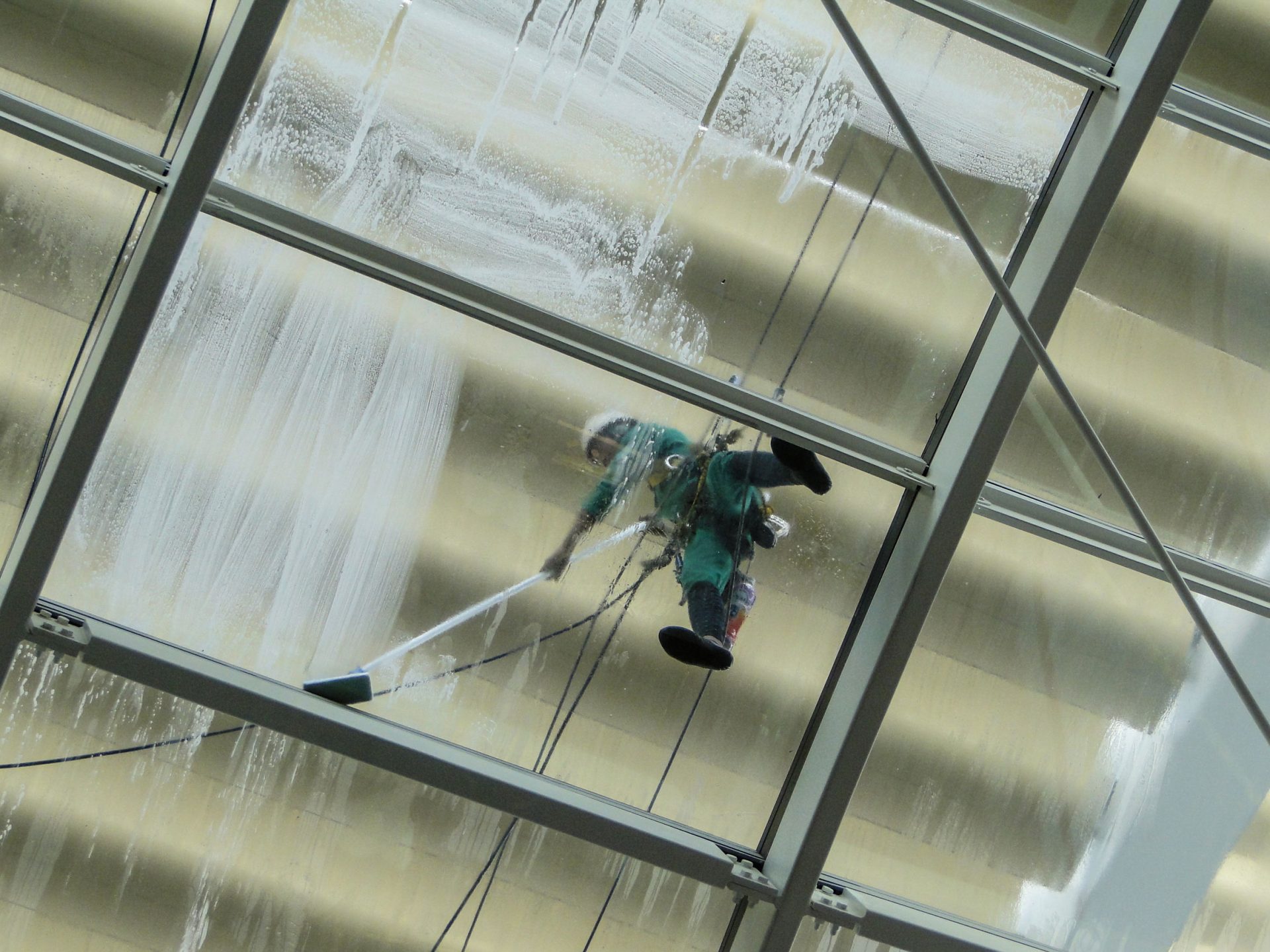Say the vinyl on your house is starting to look a bit dirty, and you’re wondering what the best solution for cleaning it might be.
Have you considered pressure washing?
If you’re confused about what exactly a pressure washer does, you’re probably not alone..
These high-powered machines are often used to clean houses, but come in handy in many other ways as well. Pressure washers are useful for cleaning gutters, washing off decks, and they’re also great at clearing mold, mud, and loose paint from the sides of your house.
Basic pressure washers consist of a water pump, a hose, and a trigger-style gun switch. Using either an electric or gas engine, pressure washers also come with different types of nozzles, including some that allow for the use of chemical cleaners.
Sounds simple, right? Before you go out and buy one for your house, you should be aware of the risks involved. Using a pressure washer without training or the proper know-how can be dangerous.
Why Pressure Washing at Home Is Disservice to Oneself
According to Consumer Reports, close to 6,057 people went to the emergency room in 2014 because of pressure washer accidents. An additional 14 percent of those people had to return the hospital as a result of complications from pressure washing alone.
What’s so dangerous about a stream of water, you’re asking? A lot can go wrong. Here are some risks that you should be aware of:
- The Nature of High-Pressure Water – A pressure washer is nearly 50 times stronger than your average garden hose. The pressurized stream of water can cut through many different materials, including heavy duty boots. If you get distracted or lose control of the hose, you may find yourself with a large hospital bill instead of a clean house.
- Risk of Electric Shock – Most pressure washers have 20-30 feet of power cable, making them susceptible to kinks and cracks. If water winds up in one of these cracks, there is a high risk of causing an electric shock or the possibility of an electric fire. Pressure washers should only be used with an electric socket that’s protected by a ground fault circuit interrupter. This will eliminate the risk of electric shock.
- High-Pressure Water Can Ruin Your Surfaces – Besides possessing the ability to seriously cut oneself, pressure washers also have the ability to ruin your house. If you don’t apply pressure evenly, you might end up breaking seals or blasting the paint off your siding.
- The Risk of Deeper Damage to Skin – Because of high-pressured water, it’s worth mentioning that a seemingly small cut can go a long way. What might seem as a small puncture can actually signify deeper damage. The chemicals from the pressure washer can be transmitted directly into your bloodstream, resulting in a bacterial infection or worst.
Pressure Washing Tips for When Professionals Aren’t an Option
Now that you know the dangers of pressure washing, it’s clear why most people avoid doing it themselves. If an emergency arises and you find yourself having to pressure wash at home, here are some tips to avoid harm.
Always remember that pressure washing is no joke, and you should handle this equipment with extreme caution. Never point the trigger of the pressure washer at anything besides the surface you are working on.
Follow these other tips to ensure that your pressure washing experience goes smoothly:
- Make sure to read the instruction manual before you start. Choose a machine with nozzles of varying degrees, and always avoid the zero-degree nozzle due to its intensity.
- Wear protective gear including long pants, close-toed footwear, and some kind of face mask while pressure washing.
- If using an electric washer, make sure that you are connected to a ground fault breaker to avoid electrocution.
- If using a gas-powered machine, always make sure to use it outside and never leave the engine on while fueling.
- Avoid using a ladder while pressure washing, as this could lead to fatal injuries.
- Leave your pressure washer on a stable surface while in use, and definitely don’t leave it unattended.
- Turn on the safety latch on the trigger when the washer is not being used.
- Know how much water pressure to apply in terms of distance and intensity used for various surfaces that you might be cleaning.

